Abstract
The accuracy of diagnosis of cell type obtained from sputum cytology, bronchial aspirate, bronchial biopsy, or percutaneous lung biopsy in 161 cases of confirmed primary lung cancer has been examined and the pretreatment histological diagnosis has been compared with the final diagnosis made after surgical resection or necropsy. The yield of positive diagnoses of malignancy obtained by each method of investigation in each cell type showed that cytological examination of sputum was the most accurate method, but a high degree of accuracy was also obtained by bronchoscopic aspiration and bronchial biopsy. Percutaneous lung biopsy was the most effective, but the least accurate, means of obtaining carcinoma cells. The level of diagnostic accuracy was highest in patients with squamous cell carcinoma. Accurate pretreatment diagnosis of patients with adenocarcinoma was particularly difficult, and only 20% of these cases were correctly diagnosed by investigation. Of seven patients with adenocarcinoma and a positive diagnosis of malignancy made on percutaneous lung biopsy, none was correctly diagnosed. The causes of error in diagnosis of cell type of primary lung cancer are discussed.
Full text
PDF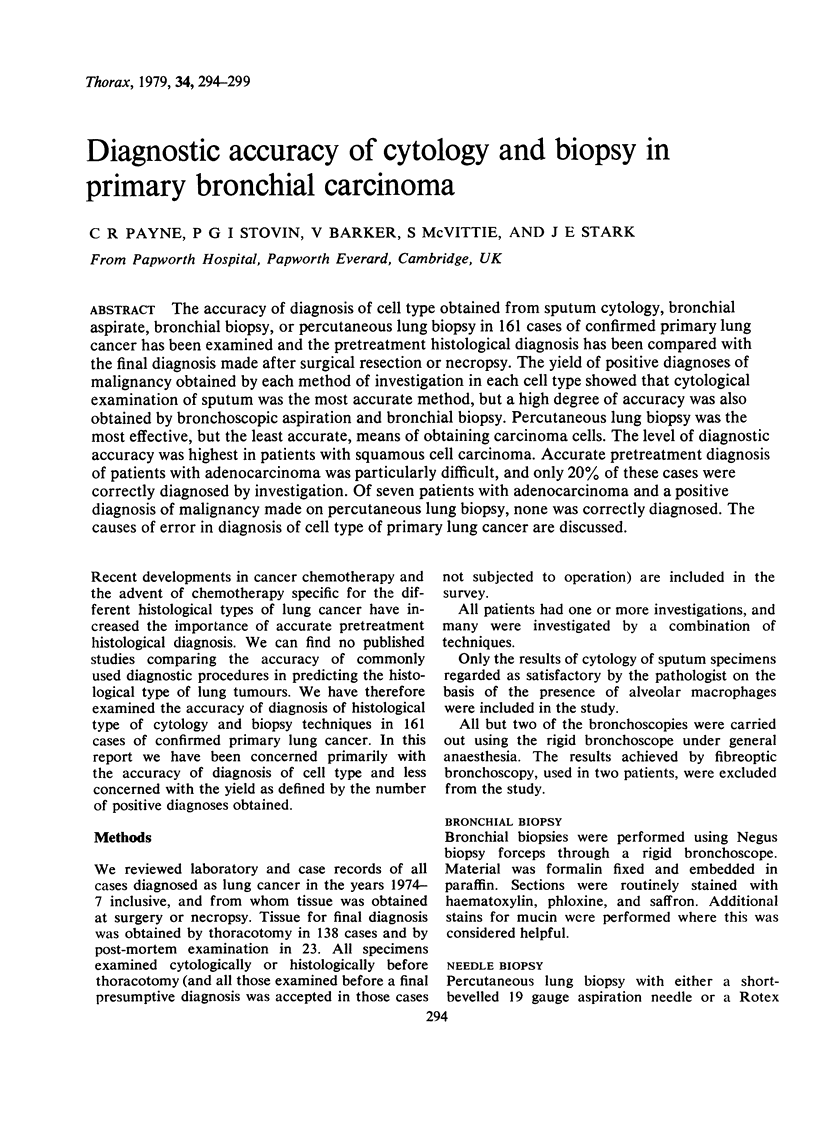
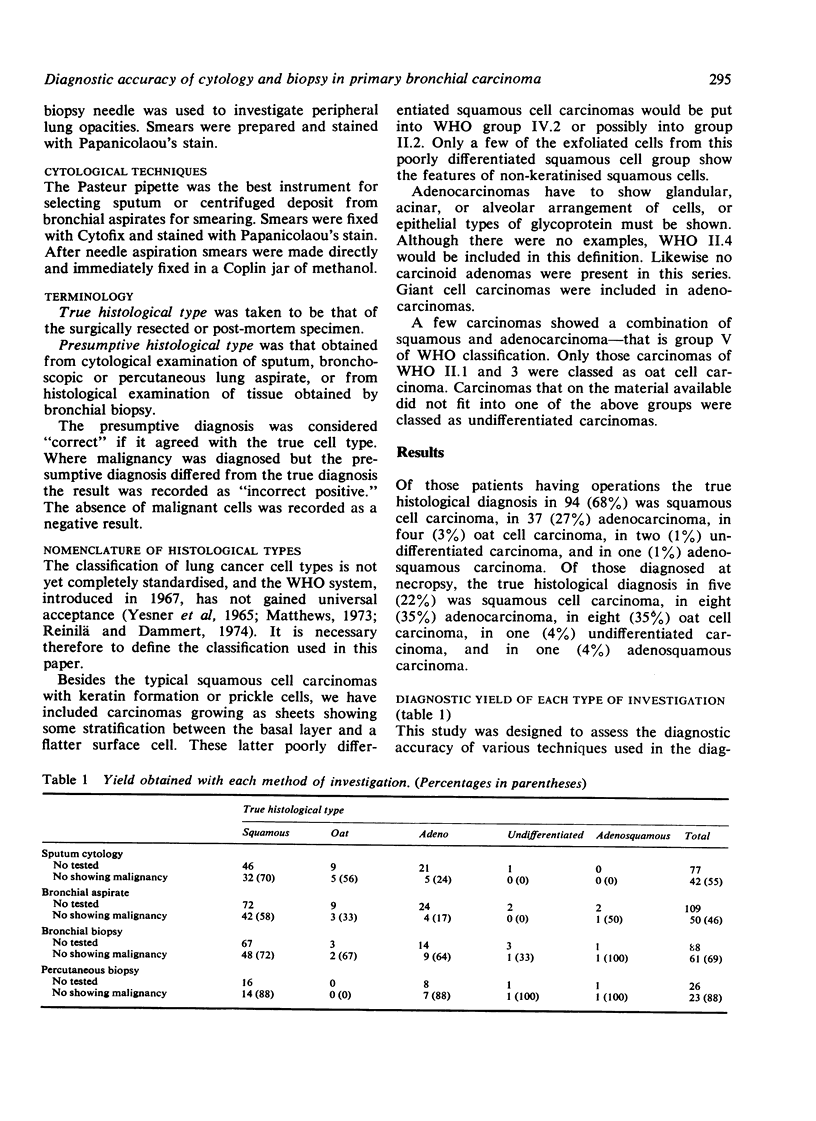
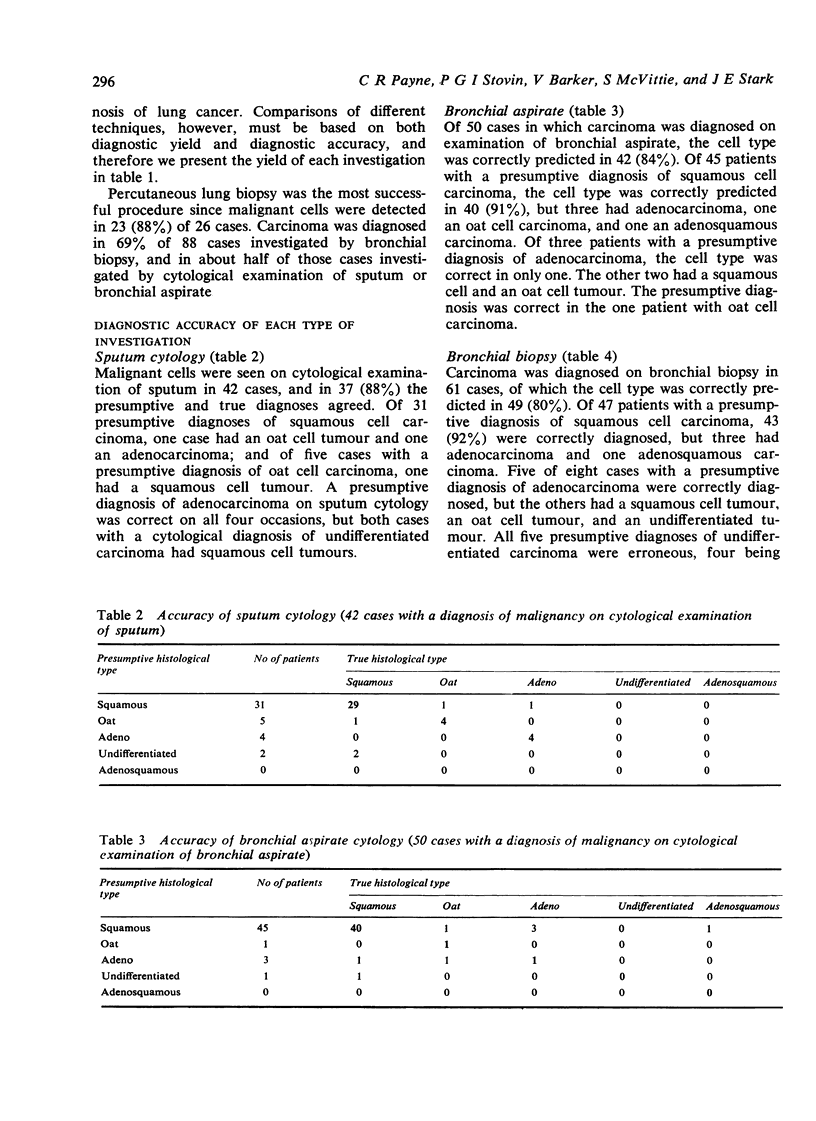

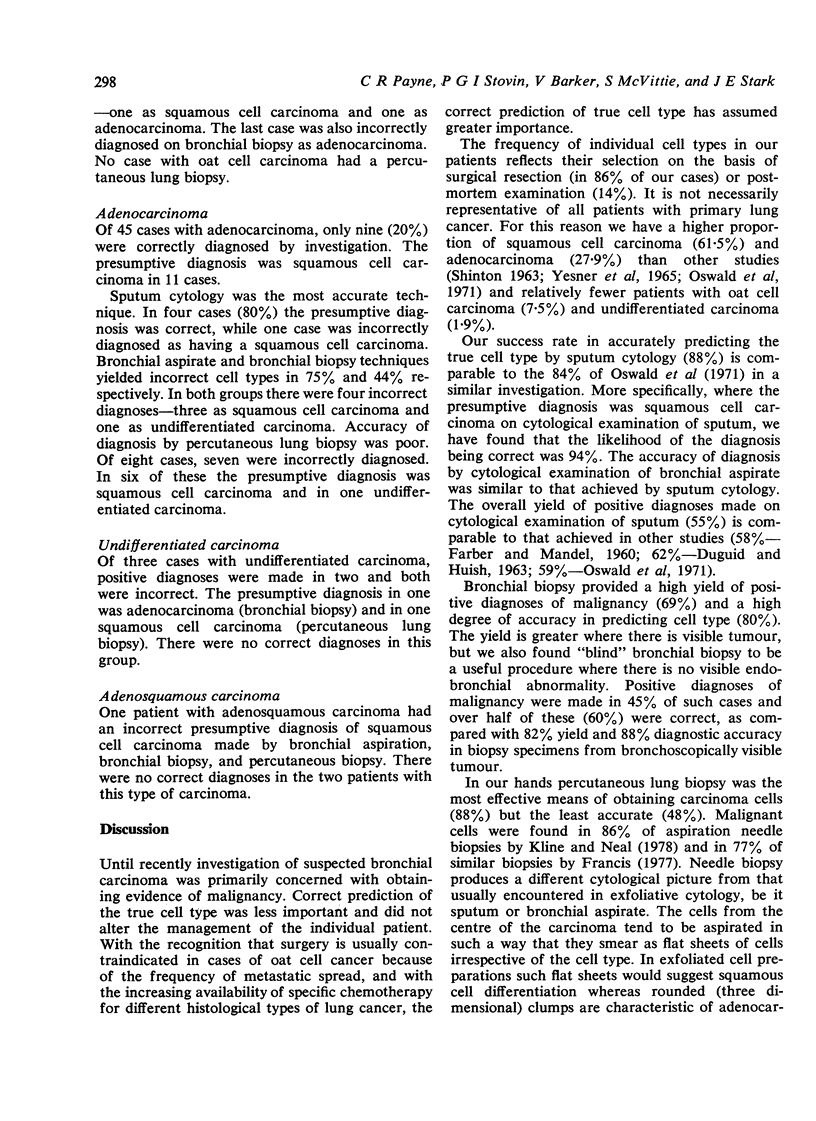
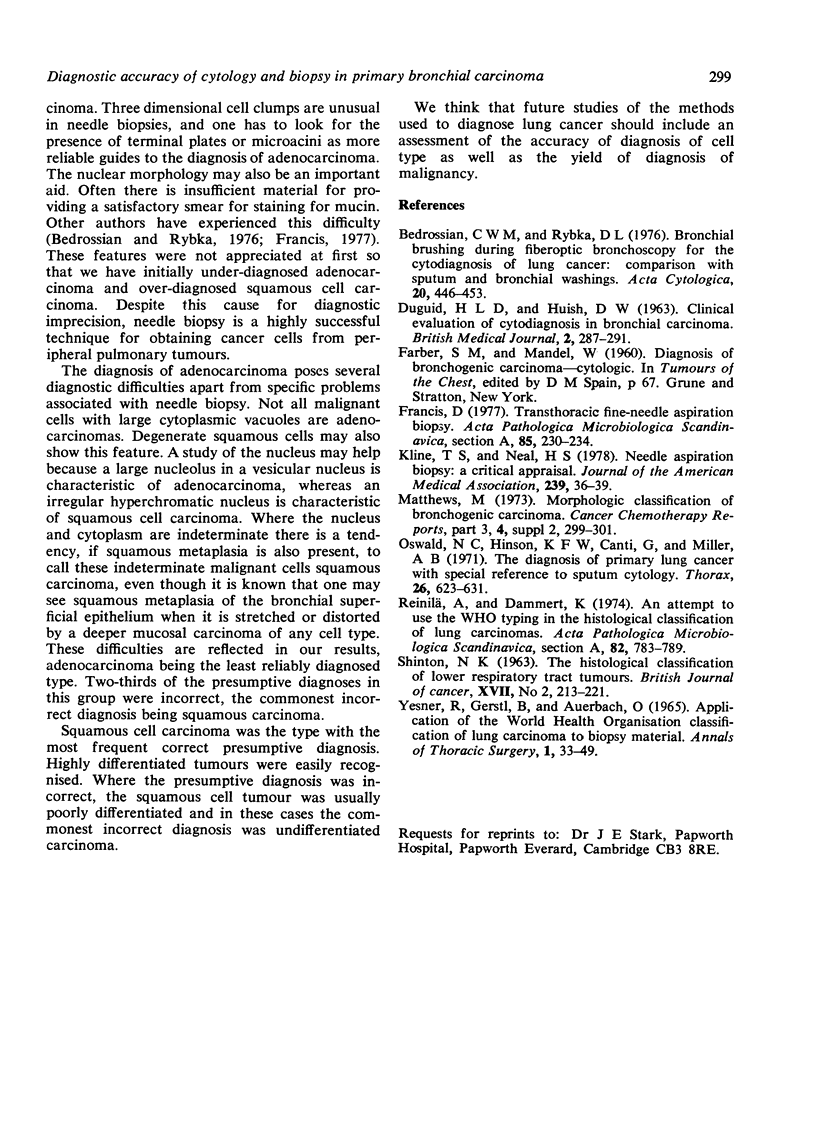
Selected References
These references are in PubMed. This may not be the complete list of references from this article.
- Bedrossian C. W., Rybka D. L. Bronchial brushing during fiberoptic bronchoscopy for the cytodiagnosis of lung cancer: comparison with sputum and bronchial washings. Acta Cytol. 1976 Sep-Oct;20(5):446–453. [PubMed] [Google Scholar]
- Duguid H. L., Huish D. W. Clinical Evaluation of Cytodiagnosis in Bronchial Carcinoma. Br Med J. 1963 Aug 3;2(5352):287–291. doi: 10.1136/bmj.2.5352.287. [DOI] [PMC free article] [PubMed] [Google Scholar]
- Francis D. Transthoracic fine-needle aspiration biopsy. A histologically verified material. Acta Pathol Microbiol Scand A. 1977 Mar;85A(2):230–234. doi: 10.1111/j.1699-0463.1977.tb00420.x. [DOI] [PubMed] [Google Scholar]
- Kline T. S., Neal H. S. Needle aspiration biopsy: a critical appraisal. Eight years and 3,267 specimens later. JAMA. 1978 Jan 2;239(1):36–39. [PubMed] [Google Scholar]
- Matthews M. J. Panel report. Morphologic classification of bronchogenic carcinoma. Cancer Chemother Rep 3. 1973 Mar;4(2):299–301. [PubMed] [Google Scholar]
- Oswald N. C., Hinson K. F., Canti G., Miller A. B. The diagnosis of primary lung cancer with special reference to sputum cytology. Thorax. 1971 Nov;26(6):623–627. doi: 10.1136/thx.26.6.623. [DOI] [PMC free article] [PubMed] [Google Scholar]
- Reinilä A., Dammert K. An attempt to use the WHO typing in the histological classification of lung carcinomas. Acta Pathol Microbiol Scand A. 1974 Nov;82(6):783–790. doi: 10.1111/j.1699-0463.1974.tb00406.x. [DOI] [PubMed] [Google Scholar]
- SHINTON N. K. THE HISTOLOGICAL CLASSIFICATION OF LOWER RESPIRATORY TRACT TUMOURS. Br J Cancer. 1963 Jun;17:213–221. doi: 10.1038/bjc.1963.30. [DOI] [PMC free article] [PubMed] [Google Scholar]
- YESNER R., GERSTL B., AUERBACH O. APPLICATION OF THE WORLD HEALTH ORGANIZATION CLASSIFICATION OF LUNG CARCINOMA TO BIOPSY MATERIAL. Ann Thorac Surg. 1965 Jan;1:33–49. doi: 10.1016/s0003-4975(10)66719-7. [DOI] [PubMed] [Google Scholar]


